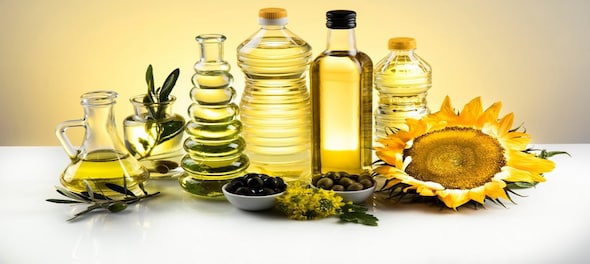
Prices of cooking oil are set to soar in India as a result of the ongoing crisis between the two top producers and exporters of sunflower oil -- Russia and Ukraine. Edible oil prices, which have been climbing unabated in India and abroad since the outbreak of the pandemic in 2020, are likely to feel the heat of the sanctions imposed on Russia by the West, following Moscow’s move to invade Ukraine.
Russia and Ukraine together account for 90 percent of India's sunflower oil imports, so the country is sure to be hit hard by the supply crunch.
India’s imports
In India, sunflower oil is the fourth most consumed edible oil, with an annual consumption of 2.5 million tonnes (mt). Among edible oils, palm oil leads the list in India with an annual consumption of 8-8.5 mt, followed by soyabean at 4.5 mt and mustard or rapeseed at 3 mt, Indian Express reported.
Only 50,000 tonnes of sunflower oil is produced in India while the rest is imported, mostly from Russia and Ukraine.
According to data from the Commerce Ministry, between April and March 2019-20, India imported 2.5 mt of sunflower oil for $1.89 billion. In 2020-21, imports stood at 2.2 mt at $1.96 billion. Of the total imports, India sourced 1.93 mt for $1.47 billion in 2019-20 and 1.74 mt for $1.6 billion in 2020-21 from Ukraine. In the same period, import of the edible oil from Russia was 0.38 mt ($287 million) and 0.28 mt ($235.89 million). Apart from these two countries, India also imported sunflower 0.17 mt oil in 2019-20 and 0.14 mt in 2020-21 from Argentina.
What affected prices in 2021
In 2021, unfavourable weather conditions in major oil-exporting countries like Malaysia, Indonesia, Ukraine, Argentina and Russia, and labour shortage due to the pandemic impacted the production of edible oil.
Soyabean oil prices soared last year on the back of dry weather conditions in the largest exporter Argentina and high demand from India and China. Sunflower oil prices rose due to drought-like conditions in Russia and Ukraine.
Government efforts
The fall in exports pushed prices higher. To curb the rise in prices, the government slashed import duty on edible oil several times last year.
“The government slashed prices six times in 2021, and now practically duty is only 5.5 percent,” B.V. Mehta, Executive Director of Mumbai-based Solvent Extractor’s Association of India, told Moneycontrol.
Relief short-lived
Global sunflower oil prices were already soaring before Russia announced its intention to send its troops to Ukraine. The landed price of imported crude sunflower oil in Mumbai (cost plus insurance and freight) on February 23 stood at $1,630 per tonne as against $1,500 a week ago. A year earlier, the price was $1,400.
“We don’t know where prices will go from here,” Mehta told Indian Express separately.
In the midst of the crisis, Ukraine has suspended operations at its ports. At present, India ships in around 200,000 tonnes every month in 20,000-50,000-tonne vessels from Black Sea ports in Ukraine and Russia. “That entire trade now stands disrupted,” Mehta said.
Meanwhile, crude palm oil and de-gummed soyabean oil prices were also quoting higher prices in Mumbai. Crude palm oil was priced at $1,810 per tonne, while soyabean oil prices stood at $1,777 per tonne, much higher than $1,460 and $1,126 per tonne, respectively, a year ago.
On the positive side, Indian farmers are likely to get better prices for their mustard produce from the mid-March harvest. At Rajasthan mandis, mustard is currently quoting at Rs 6,700-6,800 per quintal, which is higher than the government’s minimum support price of Rs 5,050.



